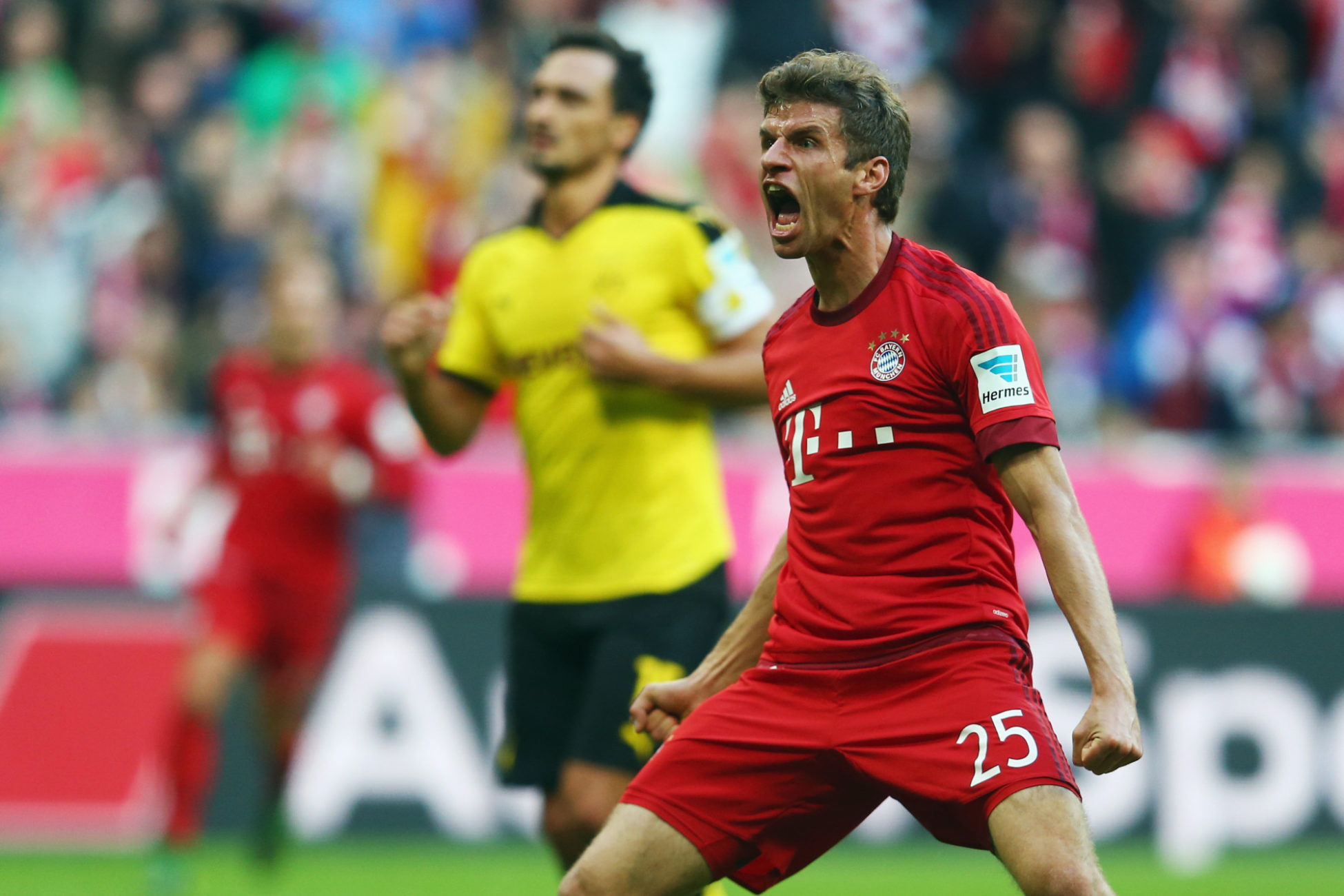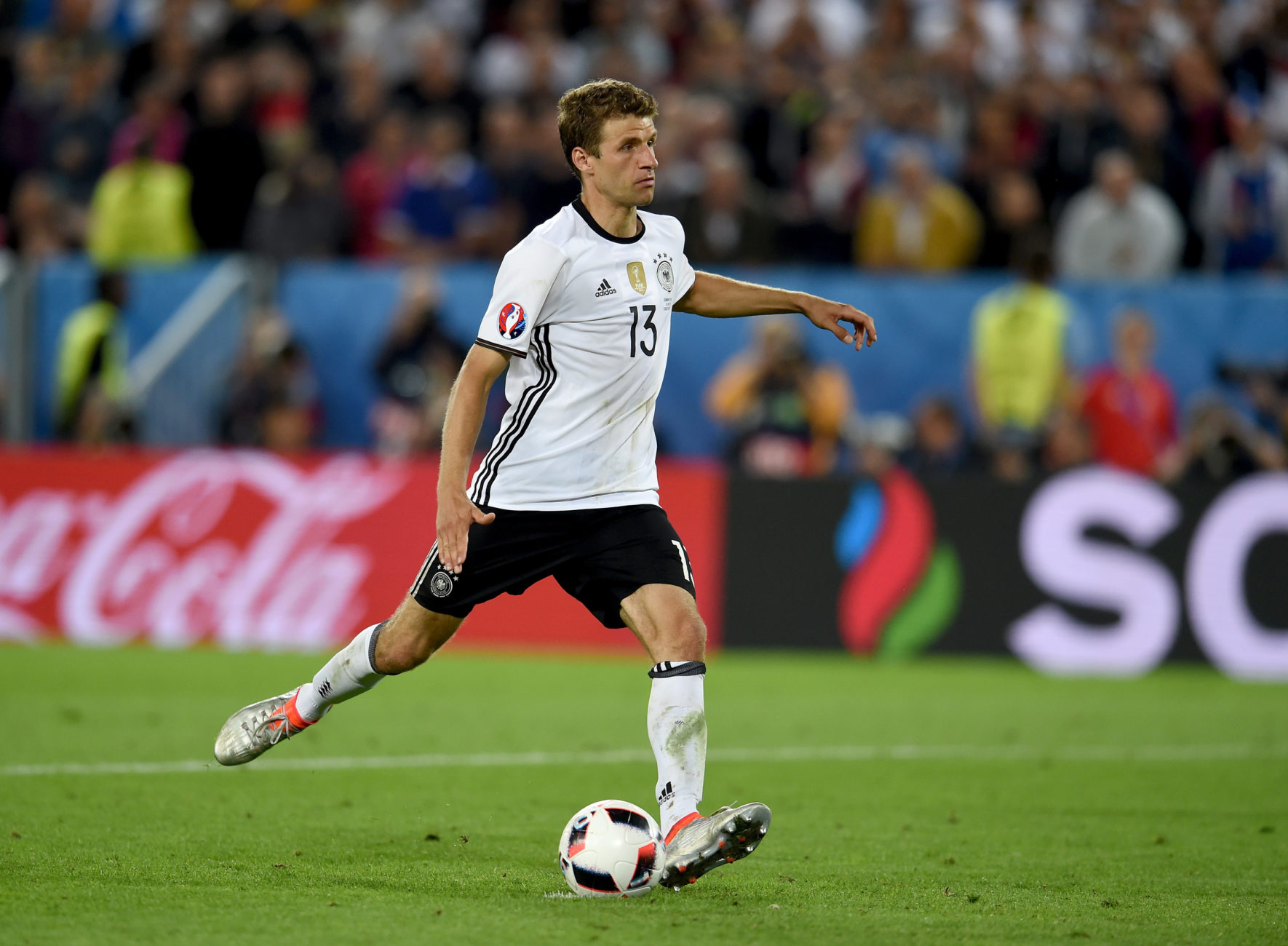Thomas Müller: Space interpreter needs comfort zone
The new season hasn’t been the German international’s friend so far. After the Euros – once again not a tournament that Müller enjoyed – he hasn’t quite found his footing under Carlo Ancelotti; it feels like he hasn’t found his way into the new coach’s system. On matchday 6 of last season, Müller was at six goals and one assist. This season, he hasn’t scored once, and could only convince against Werder Bremen – with three assists. In total, that’s seven scorer points versus three. The team scored the exact same number of goals in the first five matches of both seasons, so that can’t be behind it. But what is it, then?
Same same – but different
Thomas Müller plays as a right winger under Carlo Ancelotti, replacing Arjen Robben, Kingsley Coman, and Douglas Costa; all three of whom have already missed several games this season. While filling these winger-shaped holes on the right, it becomes obvious once more that Müller is not a winger by far: he has no good control of ball, great technique in dribbles, or the speed to simply outrun his opponents. He only completes 0.6 dribbles per game successfully – not enough for a player on the flank of FC Bayern. Arjen Robben, on average, successfully completed 4 dribbles this season, Kingsley Coman 2.5, and Franck Ribéry 2.2.
Admittedly, Thomas Müller has other qualities. He can read the game like no other and invented the term “space interpreter” to describe his style of play. He is the reason for many football fans’ interest in tactics – they finally wanted to understand how this player who didn’t seem to be really good at anything, was so successful. Müller moved to where no opponent expected him, and where he can pull opposing players towards him and create space for his team-mates. This understanding of the game is unique, but it seems to have gone missing under Carlo Ancelotti.

(Image: Alex Grimm / Bongarts / Getty Images)
The new Bayern coach’s positional play keeps Müller to the right wing in more than just theory; it’s rare to see the asymmetric build-up play that was custom under Pep Guardiola. While Guardiola put Müller in a role similar to the one he has now, there are big differences in the tactical interpretation of it. Under the Catalan, Müller pulled into the centre from the wing to enter the penalty box or occupy half-spaces. That concept enabled Müller to romp about between opponents’ defence and midfield and give them new riddles to solve all the time. These movements are still missing under Ancelotti. While the new coach gives his players lots of freedom on the field, the new positional play still has some teething problems, too static and easily predictable for the opposing team. Due to the “U” shape of build-up play, Müller needs to stick to the wing much more to be available as a passing option. This role turns him into more of an assister than a scorer. While his passing accuracy has decreased by 4%, the number of assists to shots on goal is slightly above last season’s. This is due, in part, to the number of crosses that he brings into the middle; the third-most after Alaba and Bernat. Despite the slightly less-than-ideal positioning in the team, Thomas Müller is still the player with the highest number of key passes in the team: 2.8 per game. That’s 0.6 more than Franck Ribéry. It’s clear that at the moment, he’s a provider of ideas more than a space interpreter.
Outside the comfort zone
Looking at numbers alone, Thomas Müller’s season is going as well as last, with the biggest difference being the number of goals scored. This success crisis, if we want to call it that, has been going on pretty much all of 2016. Last season, it was during the first half that Müller really shone: 14 goals before the Christmas break stand out against only 6 in the second half of the season, the last one on matchday 32 against Mönchengladbach (1-1). Looking at both seasons together, Müller has scored only three times across 15 games (since matchday 23, 2015/16). In addition to that there are missed penalties, like against Atlético, or Italy at the Euros. So more than a success crisis, it seems to be a result crisis – goals have been conspicuously absent for him. Müller shows he’s merely human after all. His reactions after yet another shot on goal misses its target show that he’s acutely aware of that fact himself: Müller seems much more frustrated and disgruntled than in previous years. He seems more dogged and his thick skin seems to have worn off somewhat – it’s obvious, on and off the field, that Müller isn’t happy with his current situation. The question is how Ancelotti can change that.

(Image: Claudio Villa / Getty Images)
One option would be to move from the current 4-3-3 formation to a 4-1-4-1 with Müller in an offensive central midfield role. Unfortunately, due to all the injuries, he’s currently the best winger Ancelotti has at his disposal, despite all the aforementioned shortcomings. Good dribbling skills would be essential to put the defensive lines of opposing teams (usually in a 4-4-2 formation) under pressure at high speed and create rooms in the centre. Müller isn’t very good at that. A change that puts him closer to the centre, where he can work with his strengths, would benefit Müller greatly, enabling him to work as Lewandowski’s partner between the lines and create chances for him. The striker would be more focused on opening up spaces for the wingers Ribéry/Costa and Robben/Coman. However, that system change would be radically different from the football we’ve seen under Ancelotti so far, especially since it would likely mean giving up one position in central midfield. Nonetheless, the manager will soon have to ask himself the big question that every Bayern coach, and Joachim Löw, have had to ask themselves: what’s the best way to involve Thomas Müller in my offensive plays? This leads into the much bigger question of what Ancelotti’s offensive concept will be at FC Bayern. Thomas Müller will be a pivotal point in answering that, but it’s as of yet still open. Bringing the space interpreter back into his comfort zone and back up to last year’s level will be crucial for this team’s success.





